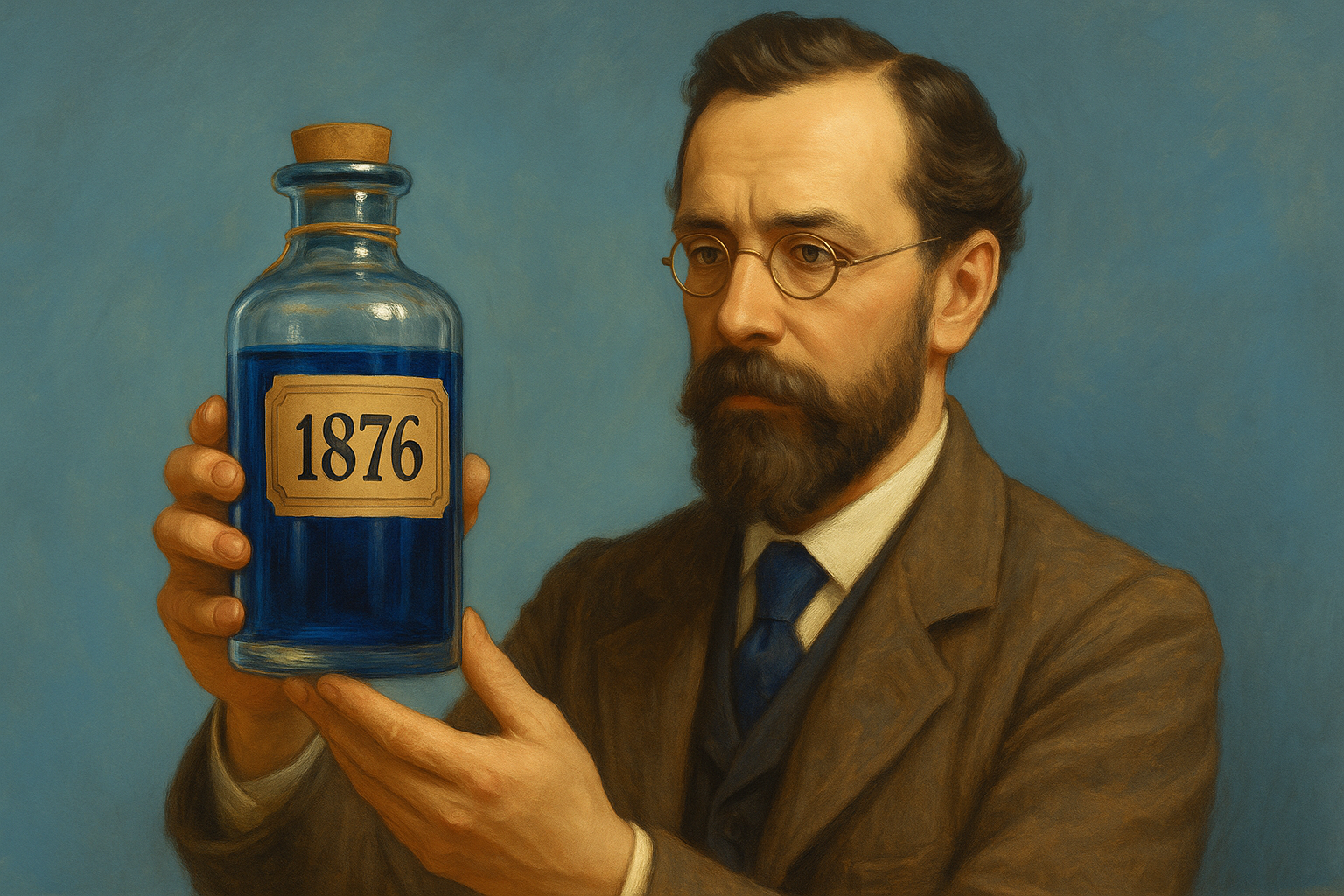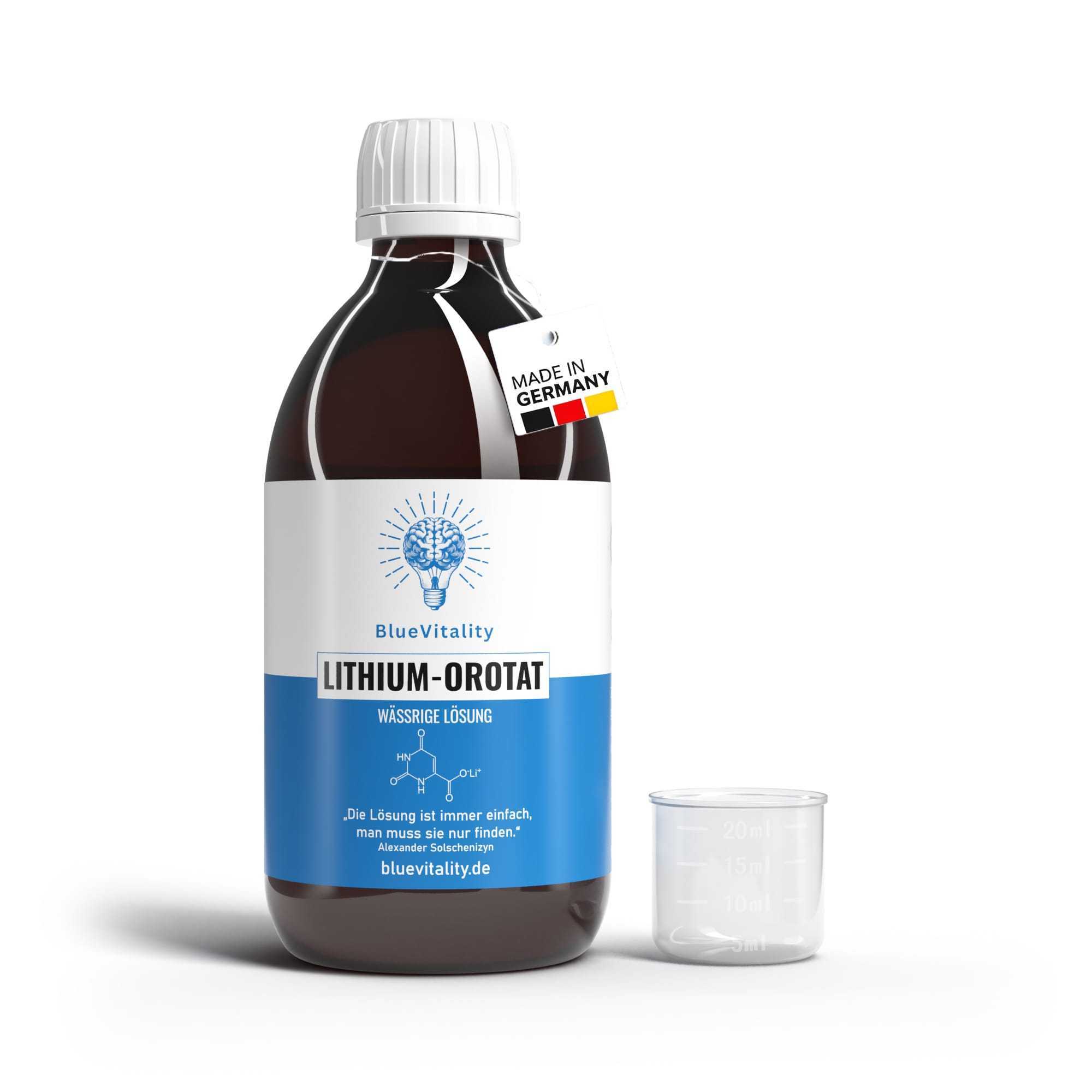Methylene blue the discovery : A breakthrough in the history of chemistry
The story of Methylene blue dates back to the 19th century, when the German chemist Heinrich Caro first synthesized this molecule. Caro, born in 1834, was an outstanding chemist of his time and worked closely with renowned scientists such as August Wilhelm von Hofmann together.
Heinrich Caro was an important employee in the dye laboratories of the BASF (Baden Anilin and Soda Factory) in Ludwigshafen, Germany. Under the direction of Hofmann and other prominent chemists of the era, Caro contributed significantly to the development of new dyes and chemical processes. His work on methylene blue marked a high point in his career and helped cement his reputation as a leading chemist of his time.
Caro's discovery of methylene blue as a textile dye was groundbreaking and led to a revolution in the textile industry. Its ability to effectively and permanently dye textiles gave methylene blue a prominent place in the history of chemistry.
Continuous research and development have led to it being considered one of the most well-known and versatile dyes in the history of chemistry. The story of Heinrich Caro and his discovery illustrates the importance of discoveries and innovations for the progress of society and the development of new industries.
Methylene blue in medicine: A blessing for humanity
The history of methylene blue in medicine is one of discovery, research, and continuous innovation. Originally developed as a textile dye, it quickly became an indispensable part of medical practice. Its diverse applications and remarkable properties have improved the lives of countless patients worldwide.
Discovery of medical benefits
The first references to its medicinal benefits date back to the late 19th century, when the German chemist Paul Ehrlich its effectiveness against malaria Through experiments, Ehrlich discovered that methylene blue has a remarkable ability to combat malaria parasites in the blood. This discovery laid the foundation for further research into methylene blue in medicine.
Historical use of methylene blue
Throughout history, it has been used in various fields of medicine. Doctors recognized its antimicrobial properties and used it to treat wounds, infections, and even disinfect surgical sites. During World War I, methylene blue was successfully used to treat wound infections in soldiers, reducing infection rates and saving many lives.
Modern applications of methylene blue
Today, it is still actively used in medicine, but with expanded applications and improved procedures. It has proven to be an effective means of treating Methemoglobinemia It has been proven effective in treating a rare blood disorder in which the body cannot transport enough oxygen. It is also used to mark tissues during surgical procedures to improve the visibility of vessels and nerves and increase the precision of the operation.
In addition, methylene blue has shown promising results in the treatment of neurodegenerative diseases shown, including Alzheimer and Parkinson . Through its ability to Mitochondria to protect and oxidative stress it can slow the progression of these diseases and improve the quality of life of patients.
It has traveled an impressive path throughout history, from a textile dye to a vital component of modern medicine. Its diverse applications and proven efficacy have made it an indispensable tool for physicians and researchers around the world. Through continuous research and innovation, it remains a beacon of hope for the treatment of various diseases and a boon to humanity.
Methylene blue in neuroscience: A key to brain research
The role of methylene blue in the Neuroscience is crucial for understanding the brain and developing treatments for neurological diseases. Since its discovery, it has attracted the interest of researchers around the world and has emerged as a promising candidate for the treatment of Alzheimer's , Parkinson and others neurodegenerative diseases proven.
Research into the brain
It has a long history as a research tool in neuroscience. Its ability to Mitochondria Its ability to protect cells and improve cell function has made it a valuable tool for researching neurological processes and diseases. Using it as a marker has allowed researchers to map and understand complex neural networks, leading to a deeper understanding of how the brain works.
Treatment of neurodegenerative diseases
The neuroprotective Properties make it a promising candidate for the treatment of Alzheimer's, Parkinson's, and other neurodegenerative diseases. Studies have shown that it can reduce the accumulation of abnormal protein deposits in the brain, which could lead to the development of new therapies for these diseases. In addition, it also has a anti-inflammatory effect that could help relieve symptoms and slow the progression of the disease.
Current applications of methylene blue
Today, it continues to be actively used in neuroscience, both in basic research and clinical trials. Its diverse applications range from the study of neural processes to the development of new therapies for neurodegenerative diseases. Through continuous research and innovation, it remains an important component of efforts to deepen our understanding of the brain and improve the treatment of neurological diseases.
It has proven key to brain research and the development of new treatments for neurological diseases. Its unique neuroprotective properties make it a promising candidate for the treatment of Alzheimer's, Parkinson's, and other neurodegenerative diseases. Through ongoing research and innovation, it remains a beacon of hope for the millions of people affected by these conditions.
Methylene blue today: A timeless substance with modern applications
Methylene blue, a substance with a rich history and versatile properties, continues to exert significant influence today in various fields, from medicine to biotechnology. Its timeless nature and wide range of applications make it an indispensable tool for researchers, physicians, and industrial users around the world.
Medical applications
It continues to be actively used in medicine, particularly for the treatment of Methemoglobinemia , a rare blood disorder that results in reduced oxygen transport in the blood. It is also used to mark tissues during surgical procedures to improve the visibility of vessels and nerves and increase surgical precision. Furthermore, it has shown promising results in the treatment of neurodegenerative diseases, including Alzheimer's and Parkinson's.
Biotechnological applications
In biotechnology, it has a variety of applications, including the staining of DNA and RNA in molecular biology and protein labeling in proteomics. It is also used as an indicator in biochemical experiments and has proven to be a useful tool in the study of cellular processes.
It's a timeless substance with modern applications that continues to make important contributions to medical research and practice. Its versatile properties and wide range of applications make it an indispensable tool for researchers, physicians, and industrial users around the world. At BlueVitality , we strive to provide you with high-quality methylene blue products that meet your needs and help you achieve your goals.
Join us on a journey through the history of methylene blue
The story of methylene blue is a fascinating journey through the world of chemistry, medicine, and science. We invite you to learn more about this remarkable molecule and appreciate its importance to humanity. At BlueVitality , we strive to provide you with the best products and information to meet your needs. We look forward to accompanying you on your own journey of discovery with methylene blue!





